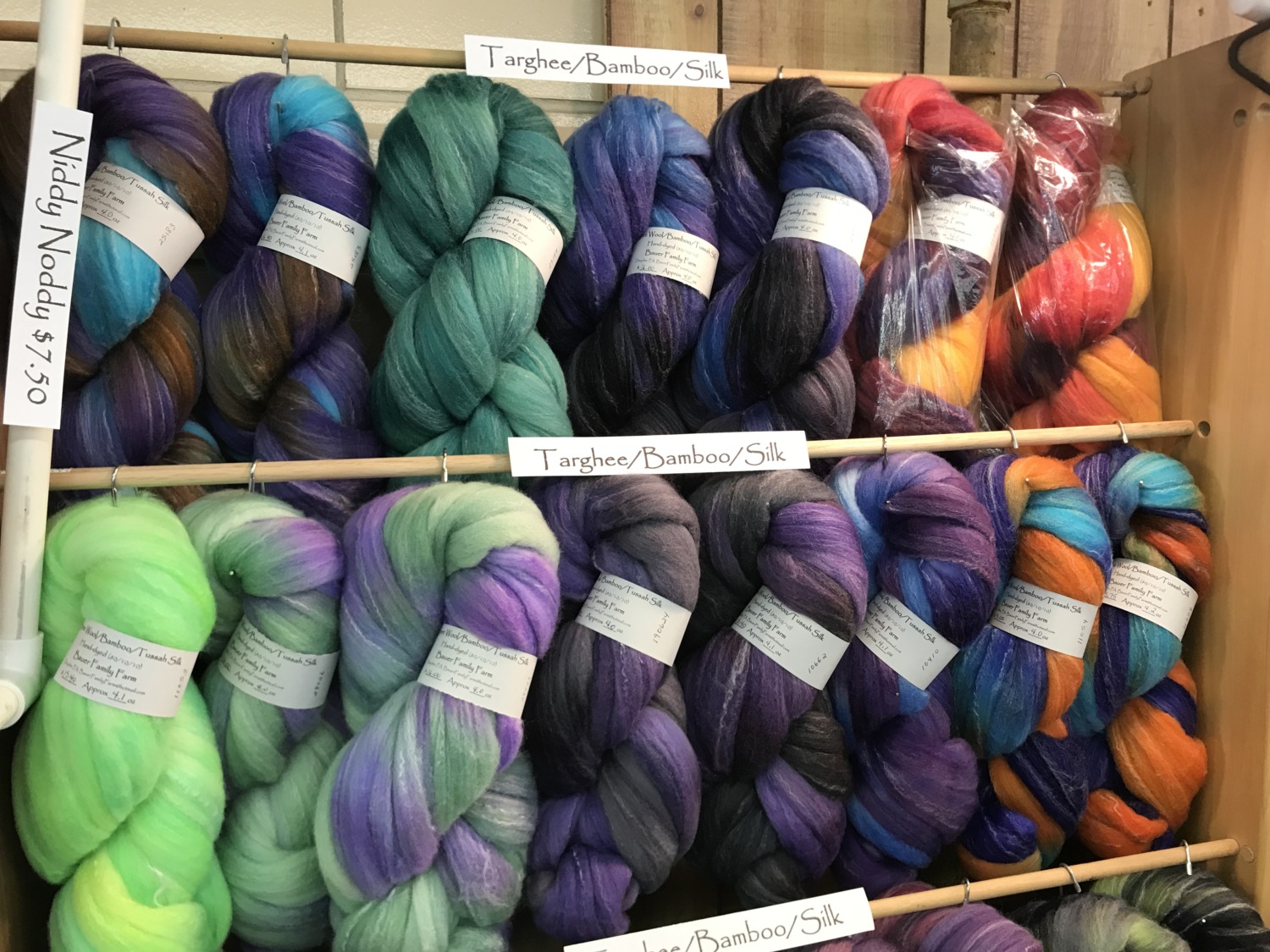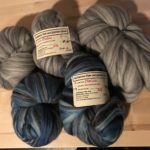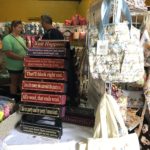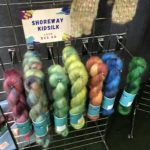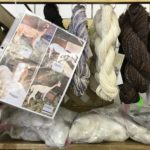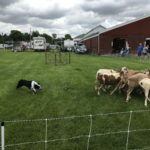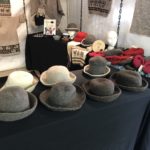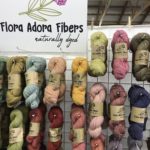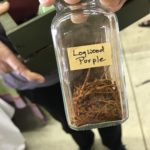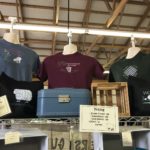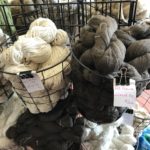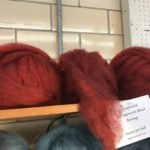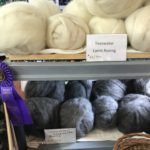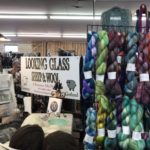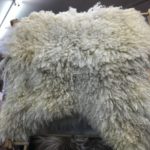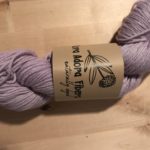Another fun thing we did on Memorial Day weekend was attend the Great Lakes Fiber Show in Wooster, Ohio. We went to this last year on Sunday, but this year we were busy on Sunday. Instead, we attended on Saturday but had the same wonderful time. Last year we went with Mom and Dad and met Aunt Anne and Uncle Paul at the show. It was fun to see it with them. This year Tom and I went by ourselves. It was just easier than trying to coordinate schedules.
The Great Lakes Fiber Show this year was very similar to the one last year. Because I knew what to expect, I had a few specific things I was looking for, as well as wanting to see all the goodies available. With vendors changing every year there are some things that are the same and some that are not. One thing that improved our experience was packing our own lunch. Fair food is not conducive to a low-fat, low-sodium, low-carb diet.
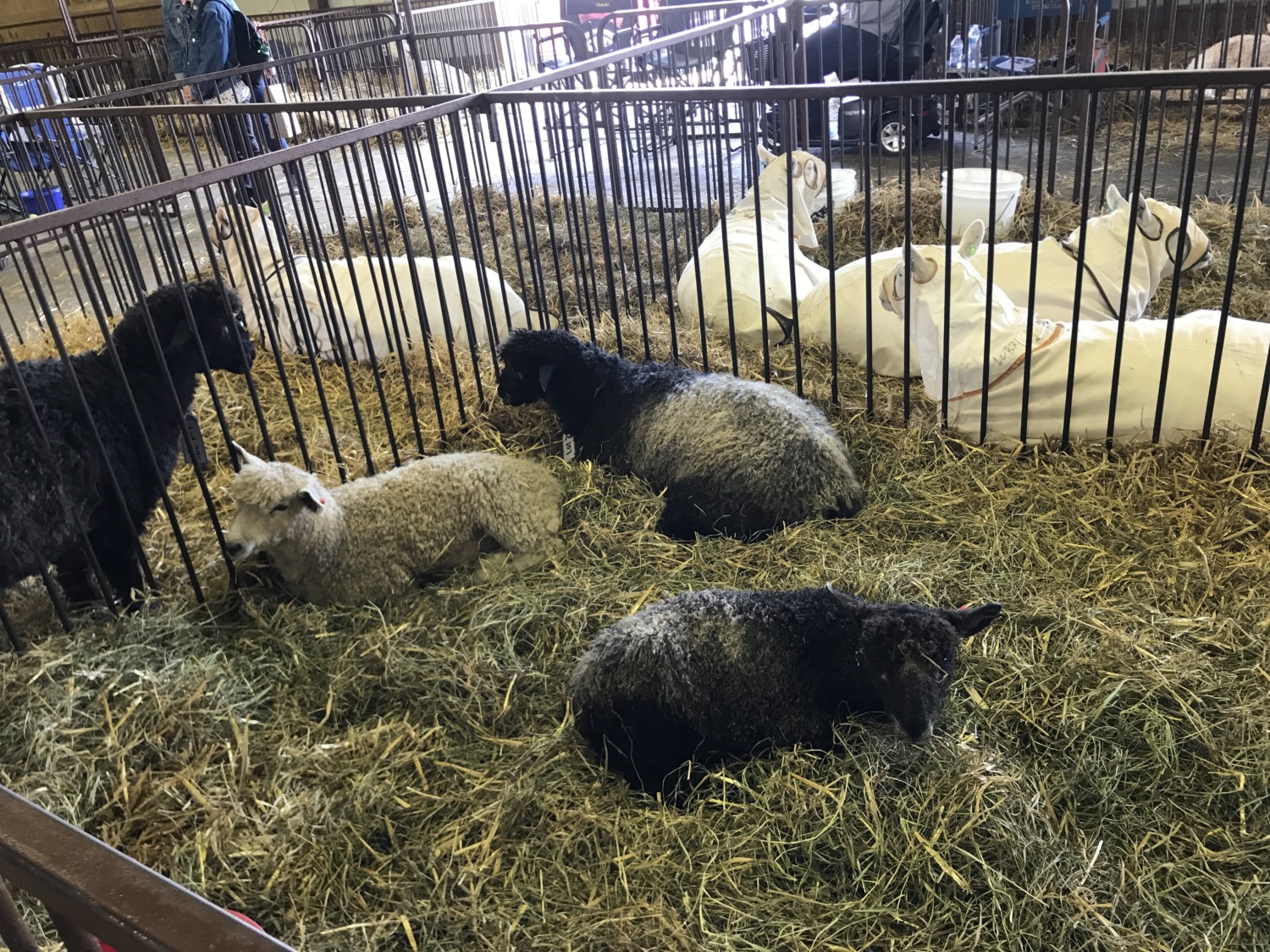
The Great Lakes Fiber Show has a sheep show and sale on Saturday. So we got to see pens of sheep, the animal on which all of this is based. The sheep are hauled away when the show closes on Saturday, so we could not see them last year. I was interested in seeing some different breeds side by side, but most of the pens did not have the breed type displayed. I am not familiar enough with sheep breeds to tell what they are without a sign.
We found some of the same booths as last year. I got another t-shirt at DreamWeaver Fiber Arts. I have worn my Proverbs 31:13 shirt a lot. This year I got one that has “Warped and Dangerous” on it. I am wearing it as I write this post. I bought another skein of yarn from Flora Adora Fibers, which uses all natural dyes. Last year I bought a skein dyed with madder. This year I added to my natural collection with a skein of logwood. Logwood is the bark of a tree native to Mexico and grown through the Caribbean and Central America. In the 17th through the 19th centuries the bark of the logwood was commonly used as a dye for purple and orange fabrics. The dye shows up as orange in acidic dyes and purple in alkaline dyes.
I saw lots of gorgeous roving, but I can’t use most of that in my historical demonstrations. The colorways are wrong for colonial spinning. Although colonists loved their colors, they didn’t have lots of colors in one braid of roving. I got some roving from DreamWeaver Fiber Arts that I think will work for colonial spinning and weaving. It is 100% merino wool, with a natural gray mix and a indigo and gray mix. I’m looking forward to spinning it and weaving some striped cloth.
The only other thing I bought was a small batt of fiber for spinning from Ohmi Fibers. I love the bright color and the roving feels like a cloud: very light and airy. The batt is a mix of alpaca, merino, targhee, and tencel. It is not at all historical, from the color to the fiber blend, so I will need to spin it over the next few months.
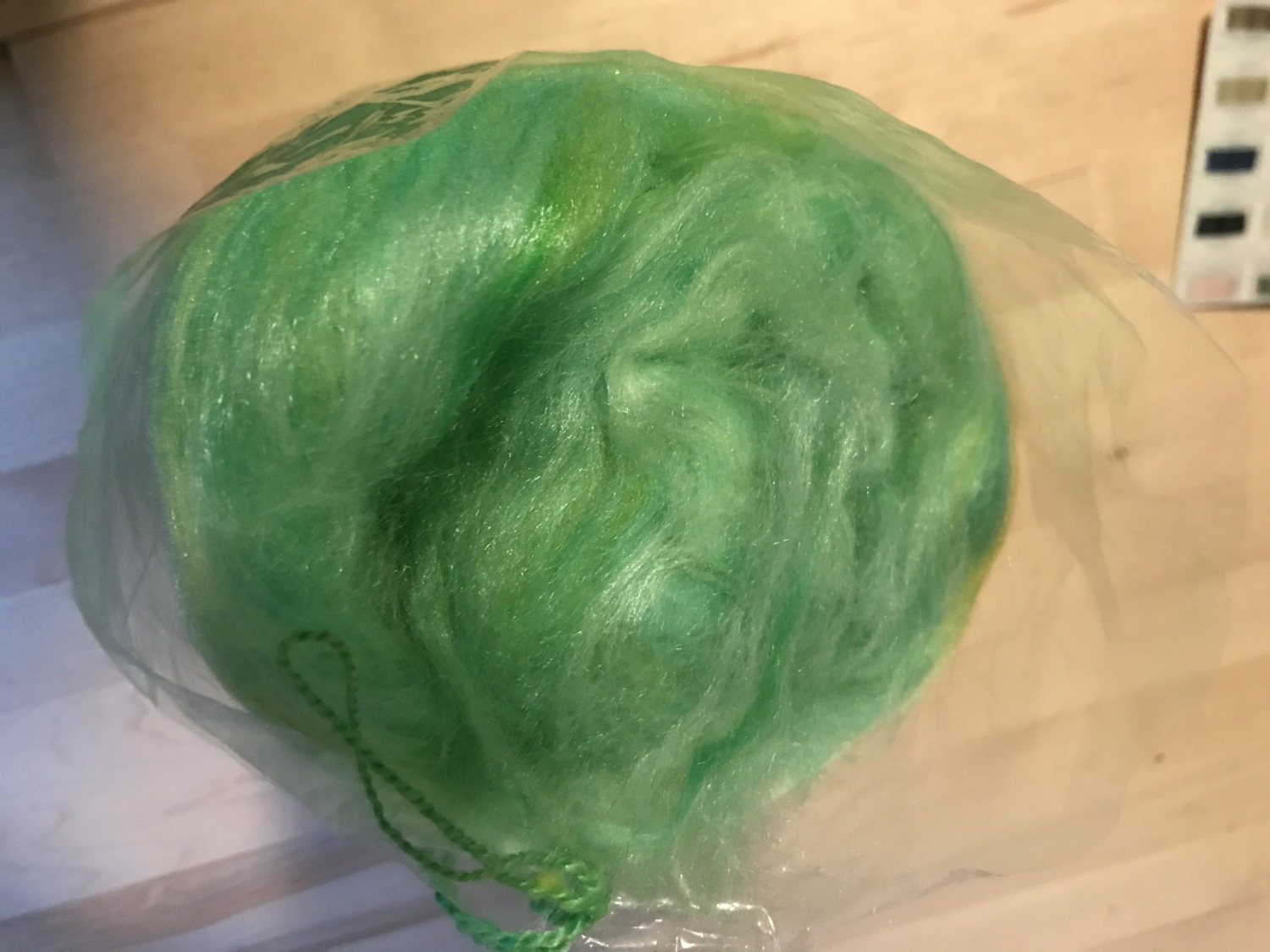
We enjoyed watching the sheep herding demonstration. Those dogs are so amazing. They had a six month old puppy that was being trained and he tended to get a little over-excited. He was doing a great job in general, but when his trainer told him to stop, he had a hard time breaking off. You could tell he is going to be a great herder eventually.
One of my favorite things about going to the Great Lakes Fiber Show is the mix of colorful items for sale. There are all kinds of yarns, roving, and fleece. I could buy anything from an alpaca fleece to sock yarn. Last year I found several cones of wool for weaving. I didn’t find much of that this year, but there were plenty of other beautiful things to choose from. With the roving I got at the Central Ohio Weaving Guild and the roving I bought at Great Lakes, I am well stocked for the next year.

